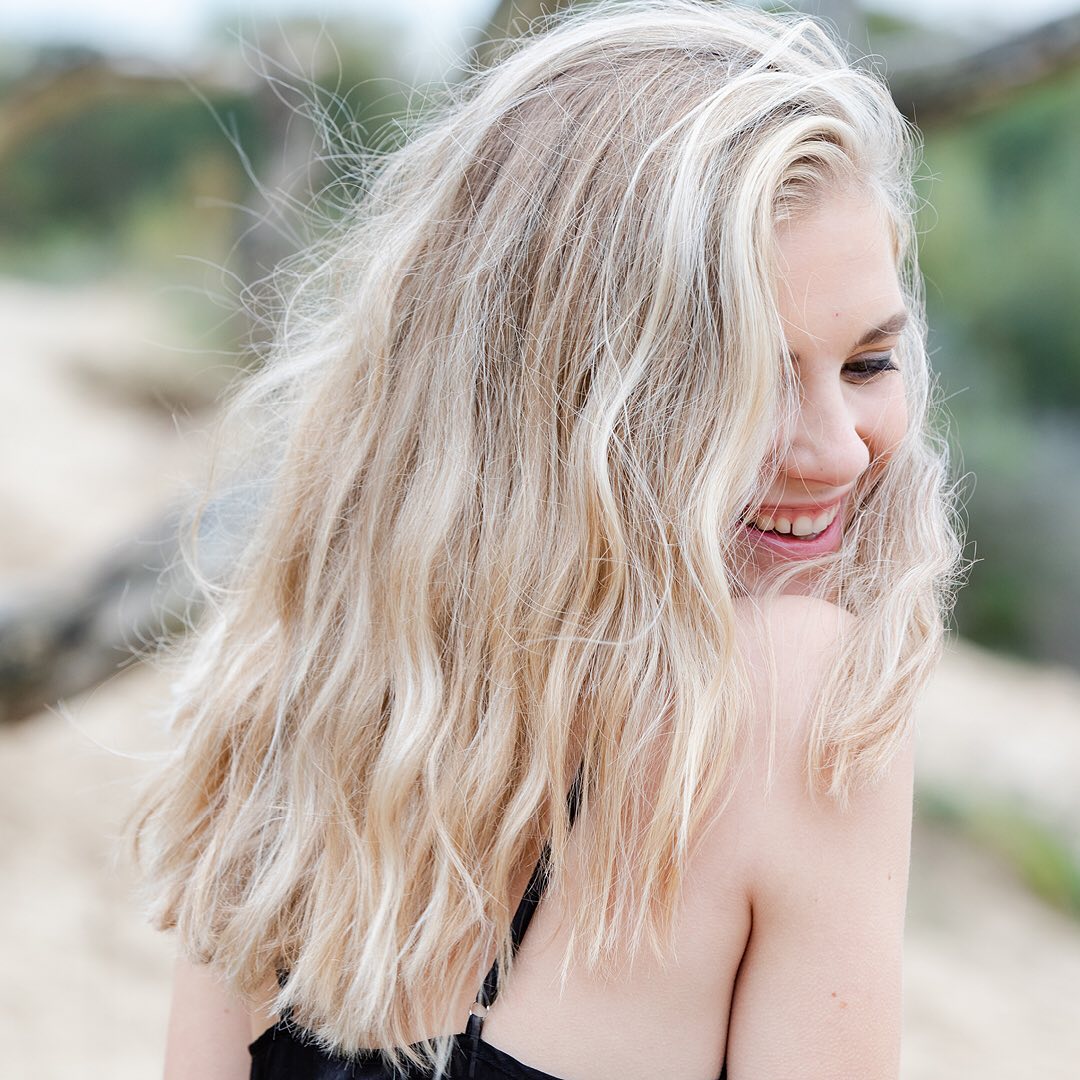Introduction
Change your look
In the modern world, personal appearance plays a crucial role in how we perceive ourselves and interact with others. For many people, making a change to their appearance, especially when it comes to their hair, is a way of expressing their personality and renewing their image. Whether it's to feel more confident or to give in to the latest trends, changing one's look is often motivated by a deep desire for transformation.
Explain your desire to change your appearance
Changing one's look can be motivated by many reasons, whether it's to overcome a life milestone, follow a current fashion trend, or simply satisfy a personal curiosity. This desire is often accompanied by a desire to assert oneself and stand out, while exploring new facets of one's personality.
Hair bleaching wish
Hair bleaching is a popular technique for transforming your look from a natural color to a much bolder shade. With celebrities and influencers proudly displaying brightly colored and diverse hair, many are driven to try this daring hair change.
Talk about wanting a different hair color
The desire to wear a different hair color can be motivated by a search for novelty or a desire to reflect a brighter state of mind. Pastels, platinum blondes and even silver are becoming increasingly popular, offering a multitude of possibilities for those wishing to explore this hair art.
Preliminary steps to bleaching
Considerations before bleaching your hair
Hair type
Before proceeding with any bleaching, it's crucial to assess the type of hair you have. Your hair type, whether thin or thick, will have a significant impact on how it reacts to bleaching products. The texture and condition of your hair will determine the success of the process and help you choose the most appropriate product.
Hair health
The overall health of your hair also plays a fundamental role in your bleaching decision. Hair that is already damaged, dry or brittle is likely to be seriously affected by bleaching. It's essential to prepare your hair by nourishing it well in advance, to avoid worsening its condition.
Wick test
The strand test is an essential step before applying the product to your entire head of hair. It helps you understand how your hair will react to the product, and whether the final color really suits you.
Explanation and significance
A strand test involves applying a small amount of bleach to a discrete section of your hair. This crucial step helps you not only to anticipate the result, but also to check your hair's resistance to the chemicals used. By carrying out this test, you reduce the risk of unpleasant surprises and ensure a harmonious result for the rest of your hair transformation.

Bleaching process
Choosing the right product
Choosing the right bleaching product is a crucial step in avoiding damage to the hair and achieving the desired result. The market offers a multitude of products. So it's important to select the one that best suits your specific needs and hair type.
Types of bleach available
Bleaches come in a variety of forms, including powder, cream or oil. Each type has its own advantages and disadvantages. For example, powder bleaches are often preferred for intensive bleaching, while cream bleaches can offer a more even, controllable application. Oil-based bleaches, on the other hand, tend to be gentler on the scalp.
How to choose according to your hair type
Fine hair requires a milder bleach to avoid excessive breakage. Conversely, thick hair can tolerate more concentrated formulas. The porosity of the hair, i.e. its capacity to absorb and retain moisture, also influences product choice. Properly assessing your hair's texture and porosity ensures better compatibility and optimal results.
Bleaching technique
Once the right product has been chosen, it's essential to apply the bleaching technique correctly to ensure uniform results and minimize damage.
Bleaching steps
Bleaching involves several key steps: product preparation, application and monitoring of application time. Start by thoroughly mixing the bleach according to the instructions provided. Then apply the mixture to the hair in sections, making sure to cover each strand to avoid staining. Use tongs to separate hair and facilitate application.
Precautions to be taken during the process
During the bleaching process, precautions must be taken to protect your hair and scalp. Wear gloves to avoid direct contact with the chemical. Check your hair regularly for lightening during the recommended exposure time, so as not to exceed the exposure threshold. Finally, rinse your hair thoroughly with lukewarm water to remove all product residue, then apply a nourishing conditioner to restore moisture to your hair.
These practical steps and precautions will help you successfully transform your hair while minimizing the risk of damage. With the right preparation and careful execution, bleaching can become a positive experience, revealing a bold, refreshed look.
See also: Does wax suffocate frizzy hair?
After-care
Maintaining the health of bleached hair
After bleaching, hair needs special attention to maintain its beauty and vitality. Chemical treatment often weakens hair, making it dry and brittle. To counteract these undesirable effects, an appropriate hair care routine is essential to restore health and preserve the color obtained.
Care at home
Adopting a specific hair care regimen helps maintain the shine and strength of your hair. Use a shampoo and conditioner formulated for colored or bleached hair, containing nourishing and moisturizing ingredients. Avoid frequent washing, which can strip hair of its natural oils. Incorporate weekly deep treatments, such as intensive moisturizing masks, into your routine to repair hair fibers.
- Use a mild, sulfate-free shampoo to avoid fading the color faster.
- Apply a serum or end-protecting cream before styling to reduce heat damage.
- Dry at low temperatures and avoid hot tools wherever possible to reduce the risk of breakage.
Recommended products for bleached hair
Opt for products enriched with natural oils such as argan, coconut or almond oil, which provide deep hydration and restore shine. Products containing fortifying proteins are also ideal, as they strengthen damaged hair structure. Use a UV protection spray to preserve your color and prevent sun damage.
Touch-ups and maintenance
Bleaching is not a one-off process; it requires regular touch-ups to maintain color uniformity and avoid the appearance of visible roots. These touch-ups must be well-planned to avoid further sensitization of the scalp and hair.
Frequency of touch-ups
The ideal frequency of touch-ups depends on how quickly your hair grows and the intensity of the desired color. A check-up every 4 to 6 weeks is often recommended. This helps maintain a vibrant color and avoid sharp demarcations between the roots and the rest of the hair.
To minimize damage during touch-ups, try to apply the product only to new growth. Protect lengths with protective care to avoid excessive fading. In this way, you protect the health of the hair while maintaining a consistent aesthetic result.
General tips for maintaining discoloration
- Moisturize hair regularly with leave-in products to compensate for moisture loss caused by repeated bleaching.
- Prefer regular cuts to eliminate split ends and promote a healthier appearance.
- Avoid chlorinated swimming pool water, which can interfere with the tones obtained, and wear a protective bathing cap if necessary.
- Rely on semi-permanent or maintenance colorations to enhance color between fading sessions.
With constant care and proper maintenance practices, bleached hair can remain radiant and full of life. This hair transformation, though delicate, can provide all the boldness and shine you desire while maintaining healthy hair.

Avoiding common bleaching mistakes
Know your hair's limits
At all costs, avoid neglecting the first golden rule of bleaching: understand the limits of your hair. The porosity and strength of each hair type varies greatly. Precise knowledge of these characteristics protects you from excesses that could lead to breakage or permanent weakening of your strands. Take the time to seriously evaluate your hair before any major chemical intervention.
Select a reasonable shade
Choosing a shade too far from your natural color in a single session can seriously damage your hair. It's wise to consider a gradual change, allowing your hair to adapt while preserving its integrity. Overly drastic transitions are often the culprits of vulnerable, exhausted hair.
Avoid over-treatment
Another crucial aspect is not to subject your hair to multiple chemical treatments close together. Whether it's coloring, keratin treatments or perms, too many treatments in a short space of time can exhaust your hair. It's wise to let your hair rest between each procedure so that it recovers properly.
Spacing out interventions
Allow a sufficient interval between touch-ups to allow your hair to regain some form of vitality. This period of rest restores your hair's inner balance, while limiting the risk of overheating or toxicity. Your hair deserves this break so that it is ready to face new aesthetic challenges every day.
Don't neglect professional advice
Although tempting, home bleaching can often lead to unexpected and regrettable results. Using a professional colorist not only guarantees a precise aesthetic result, but also respects your hair's specific characteristics.
Ask an expert for advice
A meeting with an expert will enable us to target your exact needs and choose an action plan tailored to your situation. The experience and knowledge of professionals in terms of specific products and techniques to be used will make all the difference between a dazzling success and a devastating failure.
FAQ
Does bleaching always damage the hair?
Bleaching can weaken hair, but with proper preparation, the use of suitable products, and aftercare, damage can be minimized.
Can I bleach my own hair at home?
Although this can be done, it is advisable to consult a professional to avoid the risk of unwanted results and hair damage.
What is the recommended time between two bleaches?
An interval of at least 4 to 6 weeks is recommended to allow hair to recover between bleaching sessions.
What should I do if my hair becomes brittle after bleaching?
Incorporate nourishing and repairing masks into your hair care routine to restore your hair's strength and vitality.
Is it possible to tint immediately after bleaching?
It's best to wait a few days for the hair to stabilize and optimize the take-up of the new color, while minimizing the risk of further damage.
Conclusion
Caring for your hair during bleaching requires preparation, care and the right products and techniques. Make sure you know your hair well, and follow the essential steps in the process to avoid any inconvenience. With a progressive approach and attentive care, you can achieve healthy, radiant bleached hair in complete safety.



